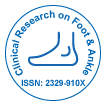Nuestro grupo organiza más de 3000 Series de conferencias Eventos cada año en EE. UU., Europa y América. Asia con el apoyo de 1.000 sociedades científicas más y publica más de 700 Acceso abierto Revistas que contienen más de 50.000 personalidades eminentes, científicos de renombre como miembros del consejo editorial.
Revistas de acceso abierto que ganan más lectores y citas
700 revistas y 15 000 000 de lectores Cada revista obtiene más de 25 000 lectores
Indexado en
- Google Académico
- sherpa romeo
- Abrir puerta J
- Claves Académicas
- Búsqueda de referencia
- Universidad Hamdard
- EBSCO AZ
- OCLC-WorldCat
- publones
- Fundación de Ginebra para la educación y la investigación médicas
- Pub Europeo
- ICMJE
Enlaces útiles
Revistas de acceso abierto
Comparte esta página
Abstracto
Recomendaciones clínicas para mejorar la salud ósea en niños con distrofia muscular de Duchenne
Mandíbula L
La distrofia muscular de Duchenne (DMD), enfermedad recesiva ligada al cromosoma X, causa debilidad muscular progresiva que conduce a la pérdida eventual de la deambulación y muerte temprana. La mejora de la fuerza muscular, la prolongación de la deambulación y el mantenimiento de la función pulmonar son todos beneficios de la terapia con corticosteroides aprobada. Sin embargo, el uso crónico de corticosteroides tiene un efecto osteoporótico que empeora la masa ósea reducida relacionada con la DMD y aumenta el riesgo de fracturas por fragilidad de huesos largos y vértebras. Estas graves consecuencias pueden tener un impacto en la supervivencia y afectar negativamente la calidad de vida. Este análisis analiza las preocupaciones clínicas actuales en torno a la salud ósea y los enfoques para la detección de la salud ósea en la DMD. Se revisan los procedimientos de diagnóstico, como la absorciometría de rayos X de energía dual (DXA), la imagenología lateral densitométrica de la columna vertebral y los marcadores bioquímicos del recambio óseo y la densidad mineral ósea, así como las terapias para mejorar la salud ósea en pacientes con DMD. La terapia con bifosfonatos ofrece una forma de aumentar la masa ósea de estos niños; Se han utilizado con éxito bifosfonatos tanto orales como intravenosos, aunque el tratamiento normalmente se reserva para niños con fracturas y/o dolor óseo que tienen baja masa ósea según DXA.
Revistas por tema
- Agricultura y acuicultura
- Alimentación y Nutrición
- Bioinformática y biología de sistemas
- Bioquímica
- Ciencia de los Materiales
- Ciencia general
- Ciencias Ambientales
- Ciencias Clínicas
- Ciencias farmacéuticas
- Ciencias Médicas
- Ciencias Sociales y Políticas
- Ciencias Veterinarias
- Enfermería y atención sanitaria
- Física
- Genética y biología molecular
- Geología y Ciencias de la Tierra
- Ingeniería
- Inmunología y Microbiología
- Química
Revistas clínicas y médicas
- Anestesiología
- Biología Molecular
- Cardiología
- Cirugía
- Cuidado de la salud
- Dermatología
- Diabetes y Endocrinología
- Enfermedades infecciosas
- Enfermería
- Gastroenterología
- Genética
- Inmunología
- Investigación clínica
- Medicamento
- Microbiología
- Neurología
- Odontología
- Oftalmología
- Oncología
- Pediatría
- Toxicología

 English
English  Chinese
Chinese  Russian
Russian  German
German  French
French  Japanese
Japanese  Portuguese
Portuguese  Hindi
Hindi